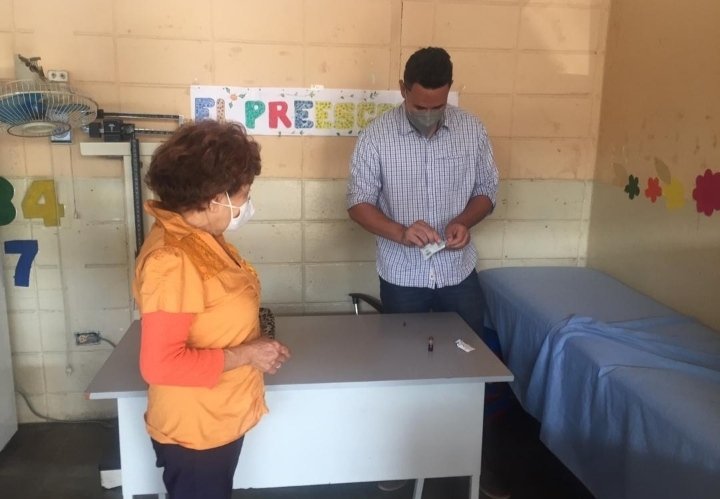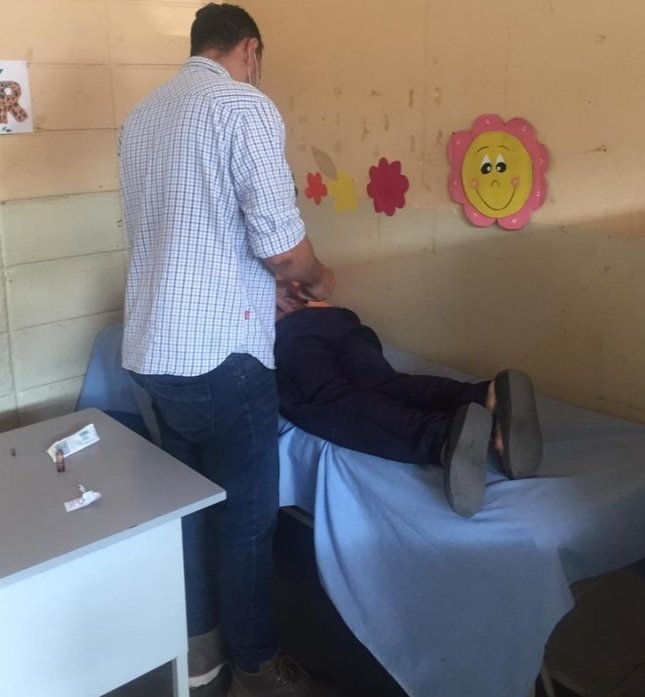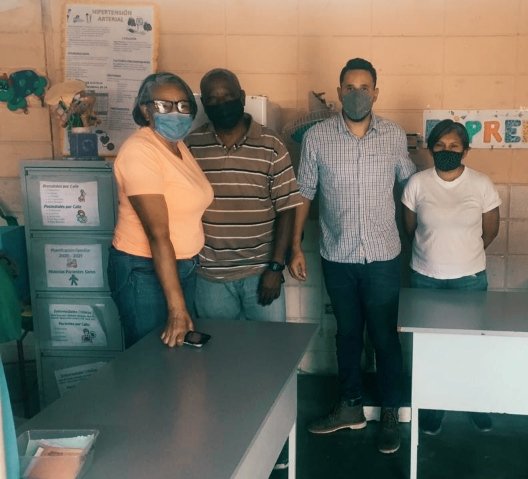Hablemos de Sacrolumbalgia.
Hola apreciada comunidad, un placer saludarlos, deseando para ustedes y para quienes les rodean bendiciones del Altísimo, traducidas en salud y vida.
Poco a poco voy recuperando el ritmo y las formas, debo admitir que extrañaba escribir, compatir y descansar, el postgrado dónde estoy es de máxima exigencia, y requiere dedicación y esmero.
Partiendo de lo anterior, pienso que la vida nos ofrece oportunidades a las que sin duda debemos sacar provecho, aprendiendo, experimentando y conociendo. Debe ser hermoso llegar anciano y contar nuestras vivencias a los más jóvenes.

Así pues, inicio el post de hoy:
El día de hoy, estuve por mi antigüo consultorio nuevamente, esta vez una señora de avanza edad (71 años), me pidió el favor de que la atendiera, petición que acepté con todo gusto.
Al llegar, noté que la paciente en cuestión algo ansiosa, me comentó que tenía fuertes dolores en la parte baja de la espalda, y que este padecimiento limita sus quehaceres diarios (es ama de casa).
La señora traía consigo un Rx, y por medio del examen físico y la clínica presentada, pude diagnosticar un Sacro-lumbalgia.
Pero, ¿Que es la Sacro-lumbalgia?
Es un dolor de fuerte intensidad, en la que se da entre la región vertebral lumbar(L4-L5) y del sacro. (parte baja de la espalda) puede ser de carácter agudo o crónico y es a menudo limitante, impidiendo así los movimientos habituales de la columna.
Las causas son diversas y van desde hernias discal, desplazamiento vertebral, conducto lumbar estrecho; anomalías congénitas de la columna lumbosacra, traumatismos, fracturas, tumores, asi como también infecciones e inflamaciones de las estructuras alrededor de la columna vertebral.

Tampoco se pueden pasar por alto, los factores externos como los sociales, ambientales, laborables o psicológicos que pueden desencadenar este tipo de afección.
Por tanto, en la referida dolencia es importante realizar un interrogatorio completo y apropiado, que los acercará a realizar un diagnóstico a apropiado.
No podemos olvidar los antecedentes laborales, psicosociales, ginecoobstetricos (en caso de ser mujer), ya que está comprobado que los pacientes que tienen trabajos dónde apliquen fuerza, son o fueron fumadores y las mujeres que han tenido varios embarazos son más propensos a sufrir Sacro-lumbalgia.
Otro factor que debemos tomar en cuenta es la edad, nuestro organismo de forma natural envejece y no podemos tener la misma fuerza, destrezas u habilidades que cuando éramos jóvenes, por tanto es indispensable que el paciente entienda está situación.
Entre los métodos diagnósticos se pueden encontrar, Rayos X, tomografía axial computarizada, resonancia magnética entre otros, no sin antes realizar un examen físico riguroso, estudios de la laboratorio como hematología, LDH, urea, creatina, y ácido úrico, así como también un Eco renal (para descartar padecimientos renales).

Tratamiento:
Se ha demostrado que agentes físicos como el hielo, junto a ejercicios de estiramientos y una faja lumbosacra, son inicialmente suficientes.
Es importante destacar que los analgésicos, como ibuprofeno o piroxican son bastante efectivos en este padecimiento, así co el complejo B, el reposo y la fisioterapia.
Se debe resaltar que La Sacro-lumbalgia, es causante de muchas consultas alrededor del mundo, la Organización Mundial de la Salud estima que entre 80-85% de las personas adultas tendrán en su vida al menos un dolor lumbar, por lo tanto debemos estar atentos y prestar nuestro mejor servicio a quien lo padezca.

Grácias.
Dios siempre de Cabrestero.
PD: Fotos de mi propiedad.
English:
Hello dear community, a pleasure to greet you, wishing for you and those around you blessings from the Most High, translated into health and life.
Little by little I am recovering the rhythm and the forms, I must admit that I missed writing, sharing and resting, the postgraduate course where I am is highly demanding, and requires dedication and care.
Based on the above, I think that life offers us opportunities that we should undoubtedly take advantage of, learning, experimenting and getting to know. It must be beautiful to arrive old and tell our experiences to the youngest.
So, I start today's post:
Today I was in my old office again, this time an elderly lady (71 years old) asked me to attend to her, a request that I gladly accepted.
Upon arrival, I noticed that the patient in question was somewhat anxious, she told me that she had severe pain in the lower back, and that this condition limits her daily activities (she is a housewife).
The lady brought an Rx with her, and through the physical examination and the clinic presented, I was able to diagnose a sacro-low back pain.
But, what is sacro-lumbago?
It is a pain of strong intensity, in which it occurs between the lumbar vertebral region (L4-L5) and the sacrum. (lower back) can be acute or chronic in nature and is often limiting, thus preventing normal movements of the spine.
The causes are diverse and range from herniated disc, vertebral displacement, narrow lumbar canal; congenital anomalies of the lumbosacral spine, trauma, fractures, tumors, as well as infections and inflammations of the structures around the spine.
Nor can we forget the external factors such as social, environmental, work or psychological that can trigger this type of condition.
Therefore, in the referred ailment it is important to carry out a complete and appropriate interrogation, which will bring them closer to making an appropriate diagnosis.
We cannot forget the labor, psychosocial, gynecological and obstetrical history (in case of being a woman), since it is proven that patients who have jobs where they apply force, are or were smokers and women who have had several pregnancies are more likely to suffer Sacrum - low back pain.
Another factor that we must take into account is age, our body naturally ages and we cannot have the same strength, skills or abilities as when we were young, therefore it is essential that the patient understands this situation.
Among the diagnostic methods can be found, X-rays, computerized axial tomography, magnetic resonance imaging, among others, but not without first performing a rigorous physical examination, laboratory studies such as hematology, LDH, urea, creatine, and uric acid, as well as a Renal echo (to rule out kidney disease).
Treatment:
It has been shown that physical agents such as ice, together with stretching exercises and a lumbosacral girdle, are initially sufficient.
It is important to note that analgesics such as ibuprofen or piroxican are quite effective in this condition, as well as the B complex, rest and physiotherapy.
It should be noted that low back pain is the cause of many consultations around the world, the World Health Organization estimates that between 80-85% of adults will have at least one low back pain in their lives, therefore we must be attentive and provide our best service to those who suffer from it.
Thank you.
God always Cabrestero.
Congratulations @arturocajoti86! You have completed the following achievement on the Hive blockchain and have been rewarded with new badge(s):
Your next target is to reach 100 posts.
You can view your badges on your board and compare yourself to others in the Ranking
If you no longer want to receive notifications, reply to this comment with the word
STOPTo support your work, I also upvoted your post!
Check out the last post from @hivebuzz:
Support the HiveBuzz project. Vote for our proposal!
Su post ha sido valorado por @ramonycajal
Excelente uso del método clínico. Saludos